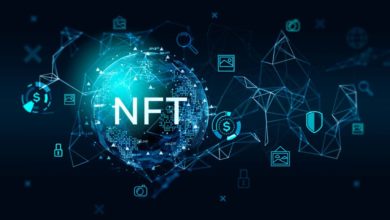DeFi’s success depends on Regulation.

The blockchain era is actually America’s second attempt at decentralized finance, believe it or not (DeFi). The United States was the very last of the major industrial nations to establish a central bank, long before blockchains were even a thing. More than a century after the Bank of England was founded and well after the majority of large European nations had their own central banks, the Federal Reserve System was established in 1913. Even back then, the Fed was only created after a series of financial crises, and it was not made with much enthusiasm.
Banking in the United States operated like DeFi does today before the Federal Reserve was established: unregulated, with no lender of last resort. Because of this, a crisis at one bank could spread quickly to others. The specific crisis that led to the establishment of the Federal Reserve was caused by a highly leveraged short squeeze gone bad, rendering the financing firm, the Knickerbocker Trust, insolvent. Following Knickerbocker’s demise, the stock market as a whole fell, and a wave of bank runs occurred.
Like in 1913, not everyone agreed with the notion that regulators had a responsibility. The justification remained the same then as it does now: while painful, bank crises are a form of market discipline, and because crypto ecosystems don’t have central banks, they offer a higher level of performance and discipline.
Crypto was thought to be superior to banks in the 19th century. Blockchain technology’s extreme transparency should have made it obvious which funds and businesses were operating on the edge and exposed to risky products. For four things, it made it hard for a clear, organized market to grow.
First, a lot of businesses and protocols have begun to combine centralized finance with off-chain DeFi, which is still illegal (CeFi). The trail ends in off-chain assets that are unknown or, worse, pledged to multiple owners rather than on-chain components that ought to be transparent and clear. On-chain makes it completely visible to other users if an asset is pledged as collateral. However, if the same asset is pledged off-chain, a company may have liabilities that are much higher than what can be determined by looking at on-chain data.
Consequently, assessments based on on-chain data will be dangerously incomplete if the company doesn’t share that information. Unquestionably, some of this was outright fraud. It was largely proof of how poorly some businesses scaled because they didn’t separate funds or keep an eye on their own processes. It will probably be many months before some of the largest bankruptcies are fully reported and investigated for us to learn more.

Second, openness has its bounds. It’s great that completely decentralized and on-chain systems can be read by users. This does not imply that consumers can assess risks or comprehend the products they are purchasing. Only a very small percentage of cryptocurrency buyers have the time or the necessary technical expertise to comprehend the most intricate DeFi protocols. In short, end users or depositors, like those in traditional banking, are spread out and don’t have the monitoring skills needed to keep these institutions in check.
Without effective benchmarks and other standards for on-chain and off-chain financial services, you cannot have a “flight to quality” because most users are not only ill-equipped to understand protocols. Regulators have set standards for banks’ liquidity and capital quality, and the results are made public.
Finally, short-term market behavior is irrational. In the first phase of the cycle, which began in early2021, a speculative frenzy drove everything upward, and in the subsequent plunge, which started in November 2021 and lasted for the majority of2022, people quickly liquidated out of fear. Over time, reason may win out, but in the short term, investors frequently act irrationally. DeFi’s automated and networked architecture may also hasten the cascade of anxiety.
It is unquestionably true that some very well-run DeFi protocols,MakerDAO being a good example, managed to survive the worst of this crypto winter with little damage. The Maker, a DeFi lending system that creates the DAI stablecoin, briefly lost its peg to the dollar but quickly recovered. The other group of companies that have fared well are CeFi companies that actively courted auditors and regulators while keeping an eye on the long term. The strict reporting that is needed to get a Big 4 auditor or to list on a U.S. stock exchange is a strong incentive for businesses.
Because it is the future of banking, the development of the DeFi sector is important. And compared to other industry issues, banking crises cause the economy much more systematic harm. Financial systems should be designed to direct capital to businesses that invest and boost economic growth and productivity. When they stop operating, the consequences affect the entire economy. The United States’ 1907 banking crisis resulted in a 26% decrease in imports and an 11% decline in industrial production. For comparison purposes, this drop is like the global financial crisis of 2008.
Although the frequency of financial crises increased after the Federal Reserve was established, its effects may not have changed significantly. The United States experienced banking crises and panics in the 19th century in the years 1819, 1837, 1857, 1873, 1884, 1893, and 1896; nearly every one of these events resulted in a recession. The Great Depression was the only significant crisis of the 20th century, though. So far in the 21st century, we’ve also had one major crisis: the Global Financial Crisis. However, because then-Fed Chair Ben Bernanke was so smart and foresighted, its effects were much less bad than those of the Great Depression.
The lessons for blockchain business ecosystems are simple: government-backed insurance models and fiat currencies based on professionally run central banks are doomed to failure without embracing regulatory compliance. Even the best-run businesses won’t be able to accept nearly any level of acceptable risk necessary to generate a respectable return or increase the value of capital. And DeFi has no real future without that.






